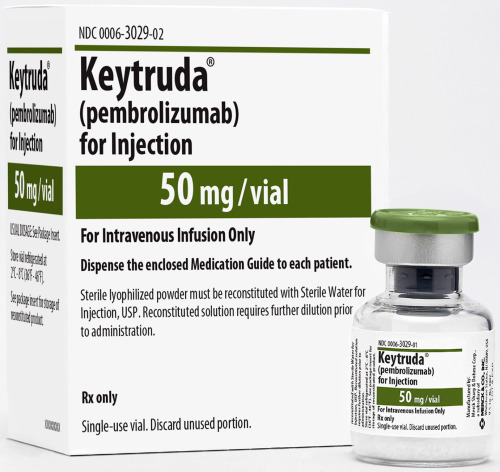FDA BRIEF: Week of May 8, 2017

RADICAVA (edaravone) intrvenous infusion
Mitsubishi Tanabe Pharma America
INDICATION: Treatment of amyotrophic lateral sclerosis (ALS)
ADDRESSING UNMET NEED:
- ALS is rare disease; attacks and kills nerve cells controlling voluntary muscles leading to paralysis
- 12,000-15,000 Americans have ALS; most die from respiratory failure within 3-5 years
REG. PATHWAY: NDA
- Leveraged data from Japanese trials
- Orphan drug designation
MECHANISM OF ACTION: Unknown
EFFICACY:
- 6-month, randomized, double-blind study, n =137 Japanese patients with ALS, RADICAVA vs. placebo
- Primary efficacy endpoint: Change in the ALS Functional Rating Scale – Revised (ALSFRS-R) total scores from baseline at week 24
- Decline in ALSFRS-R scores from baseline significantly less in the RADICAVA-treated patients (p=0.0013)
SAFETY:
- Most common adverse reactions: Bruising (contusion), gait disturbance
- Serious risk: Hives, swelling, or shortness of breath, and allergic reactions to sodium bisulfite, an ingredient in the drug

BAVENCIO (avelumab)
EMD Serono
SUPPLEMENTAL INDICATION: Treatment of patients with locally advanced or metastatic urothelial carcinoma (UC) who:
- Have disease progression during or following platinum-containing chemotherapy
- Have disease progression within 12 months of neoadjuvant or adjuvant treatment with platinum-containing chemotherapy
REG PATHWAY: sBLA
- Accelerated approval, Priority review
- Approved based on tumor response and duration of response
- Continued approval may be contingent upon verification and description of clinical benefit in confirmatory trials
EFFICACY:
- Open-label, single-arm, multi-center study, n=242 patients with locally advanced or metastatic UC with disease progression
- Efficacy outcome measure: Confirmed overall response rate (ORR) using RECIST criteria, duration of response (DOR); followed for minimum of both 13 weeks and 6 months
- ORR: For at least 13 weeks : 13.3% (n=30), 6 weeks 16.1% (n=26)
- Median time to response: 2.0 months
SAFETY:
- Most frequent serious adverse reactions: Urinary tract infection/urosepsis, abdominal pain, musculoskeletal pain, creatinine increased/renal failure, dehydration, hematuria/urinary tract hemorrhage, intestinal obstruction/small intestinal obstruction, and pyrexia
- Most common adverse reactions: fatigue, infusion-related reaction, musculoskeletal pain, nausea, decreased appetite, and urinary tract infection
KEYTRUDA (pembrolizumab) injection
Merck
SAFETY:
- Most common AEs : Fatigue, nausea, constipation
- Most common grade 3-4 adverse reactions: Fatigue, dyspnea, nausea, vomiting, diarrhea, and rash
- Most common adverse reaction: Acute kidney injury
- Immune-mediated adverse reactions: Pneumonitis, colitis, hepatitis, endocrinopathies, and nephritis

FLOURISH Pediatric Esophageal Atresia Device
Wilson-Cook Medical
INDICATION FOR USE: For use in pediatric patients, up to one year of age, with esophageal atresia without a tracheoesophageal fistula (TEF) or for whom a TEF has been closed as a result of a prior procedure. This device should be used only when the gap between the upper and lower portions of the esophagus is less than 4 centimeters apart.
ADDRESSING UNMET NEED:
- 1 in every 2,500 babies born with esophageal atresia; birth defect causing gap in esophagus
- Condition cannot feed normally, also have a tracheoesophageal fistula, breathing inteference
- First non-surgical option to treat this birth defect
REG PATHWAY: Humanitarian Device Exemption
DEVICE DESCRIPTION:
- 2 catheters with a magnet at its tip
- One inserted through mouth and other through stomach
- Magnetic ends attract one another and pull ends of esophagus together; surrounding tissue grows together
EFFECTIVENESS:
- Implanted in 16 patients
- All had successful joining of esophagus within 3-10
- However, 13 of 16 patients developed anastomotic stricture requiring balloon dilation procedure, a stent or both to repair
SAFETY:
- Contraindicated in infants with existing tracheoesophageal fistula or who have esophageal segments that are more than 4 centimeters apart
- Potential complications: Ulceration, tissue irritation, gum irritation
- Potential long-term complication: Gastroesophageal reflux
Image credits: FDA, Google

